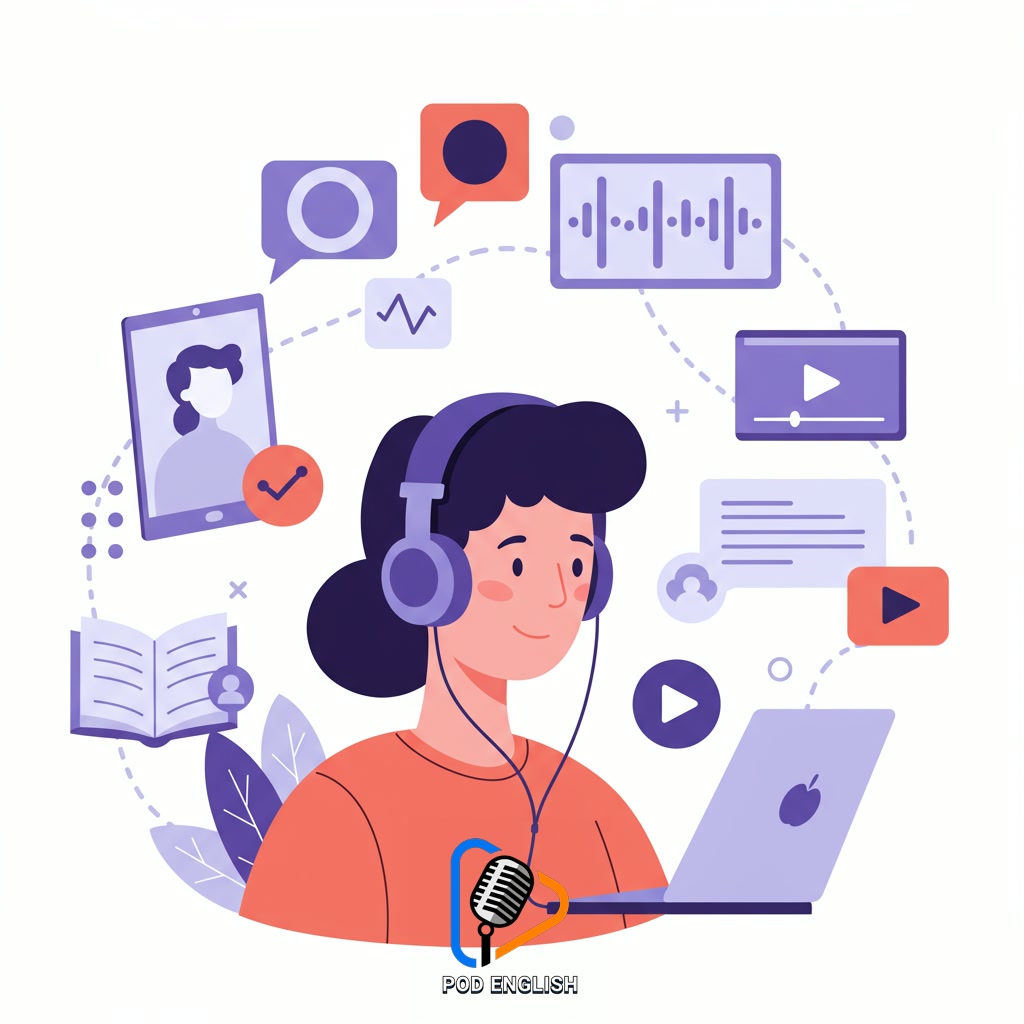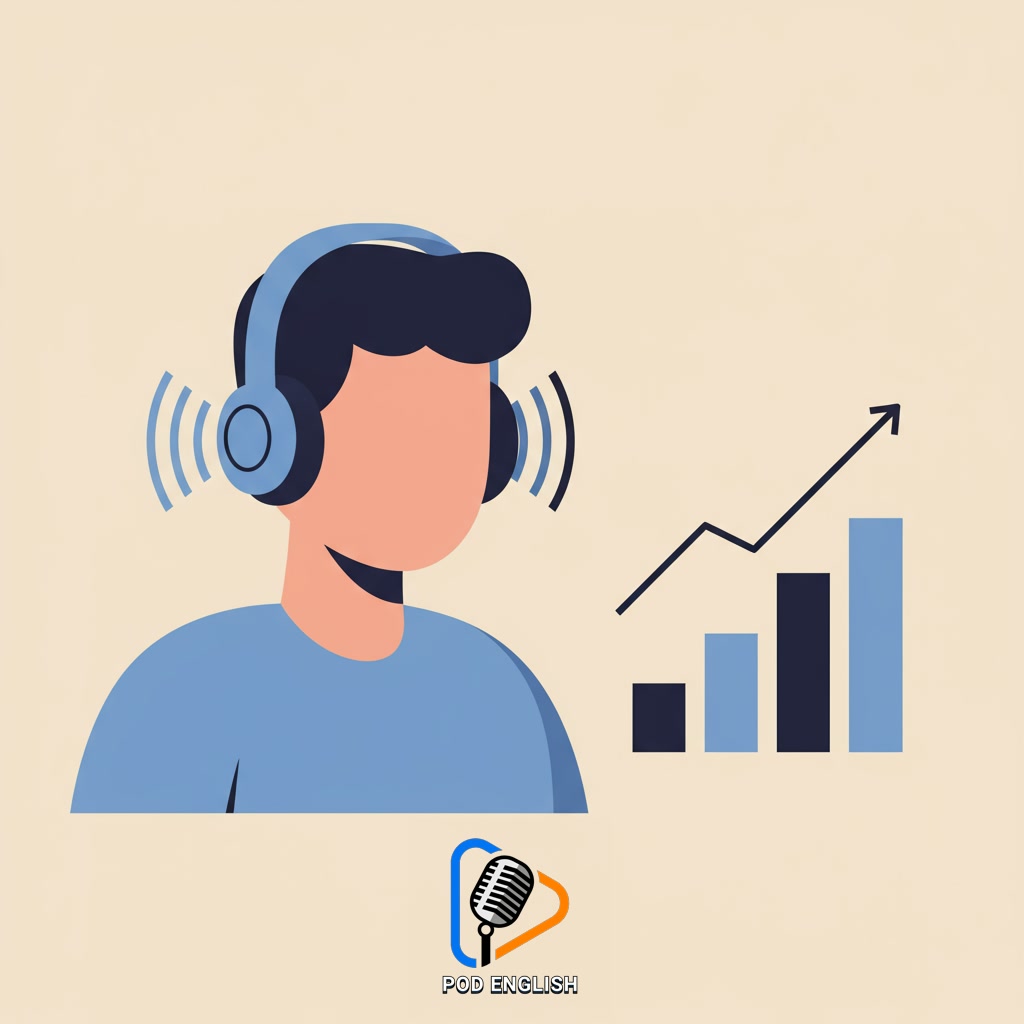Learn English
Learn English: Improve Your Listening Skills from Beginner to Advanced Levels

This material explores strategies for enhancing your English listening proficiency. It provides guidance suitable for individuals starting out, progressing through intermediate levels, and reaching advanced comprehension. The objective is to support learners in developing stronger skills for understanding spoken English across various contexts.
Table of Contents
- Section 1: Introduction: Why Listening Skills Matter in English
- Section 2: Starting Out: Essential Listening Strategies for Beginners
- Section 3: Moving Forward: Improving Listening Comprehension at the Intermediate Level
- Section 4: Reaching Fluency: Advanced Listening Techniques and Challenges
- Section 5: Putting it into Practice: Effective Resources and Daily Habits
- Section 6: Measuring Progress: How to Track Your Listening Improvement
Section 1: Introduction: Why Listening Skills Matter in English
Listening is a fundamental skill in mastering English. It’s not just about hearing sounds; it’s about understanding meaning, intention, and context. Developing strong listening skills is crucial because it enables you to comprehend spoken English in real-life situations, whether you’re talking with native speakers, following lectures, watching movies, or listening to music and podcasts. Good listening is also the foundation for effective communication; you need to understand before you can respond appropriately in conversations. Without solid listening comprehension, improving your speaking, reading, and writing can be much harder. This introduction highlights why focusing on this skill from the beginning is essential for your overall progress in learning English.

Section 2: Starting Out: Essential Listening Strategies for Beginners
Okay, you’re just starting your English listening journey! Don’t feel overwhelmed. The key when you begin is to start simple. Find audio materials designed for learners, like simple dialogues or slow-speed recordings. Focus on trying to catch the main idea or just a few key words in each sentence, rather than panicking about understanding every single detail. It’s like building a muscle – you start with light weights. Get used to the sounds and rhythm of English. Consistency is more important than perfection at this stage. Try listening for short periods regularly. This foundational practice will make it much easier as you move forward.

Starting Out: Essential Listening Strategies for Beginners
Section 3: Moving Forward: Improving Listening Comprehension at the Intermediate Level
Now that you’ve built a foundation with simple materials, it’s time to move forward to the intermediate level. At this stage, your goal is to handle more complex spoken English. Start exploring authentic materials like podcasts, short news clips, or interviews designed for general audiences, even if you don’t understand every single word. Focus on grasping the main ideas and important details rather than getting stuck on unfamiliar vocabulary. Try listening to different native English speakers to get used to various accents and speaking speeds. Don’t be afraid to listen multiple times. Using context clues and predicting what comes next are also valuable skills to develop now. Keep practicing regularly to steadily improve your comprehension.

Moving Forward: Improving Listening Comprehension at the Intermediate Level
Section 4: Reaching Fluency: Advanced Listening Techniques and Challenges
Moving beyond the intermediate stage brings you to the advanced level, where the goal is to achieve near-native fluency in understanding spoken English. This involves mastering techniques to handle rapid speech, diverse accents, complex idiomatic expressions, and nuanced communication, including sarcasm and humor. Challenges at this level often include processing information in noisy environments, understanding highly technical or unfamiliar topics, and keeping pace with natural, unscripted conversations among native speakers. Advanced listening requires active strategies like focusing on key details while ignoring distractions, inferring meaning from context and tone, recognizing connected speech patterns, and continuously exposing yourself to a wide range of authentic audio materials, from academic lectures and complex podcasts to fast-paced films and group discussions. Success at this stage means confidently comprehending English in almost any real-world situation.

Reaching Fluency: Advanced Listening Techniques and Challenges
Section 5: Putting it into Practice: Effective Resources and Daily Habits
Building upon reaching advanced listening, the next crucial step in your Learn English journey is actively applying these skills daily. This involves strategically utilizing effective resources. Move beyond simple exercises and immerse yourself in authentic spoken English from various sources like podcasts on diverse topics, engaging video content, international news broadcasts, movies, and even music lyrics. Develop consistent daily habits: dedicate specific time slots for focused listening, practice active listening by trying to understand nuances and intonation, and regularly switch between different types of audio to expose yourself to various accents and speaking speeds. Integrating these resources and habits into your routine is key to solidifying your advanced comprehension and achieving fluency in understanding spoken English.

Putting it into Practice: Effective Resources and Daily Habits
Section 6: Measuring Progress: How to Track Your Listening Improvement
Moving from applying advanced listening skills, consistently measuring your progress is key to understanding how far you’ve come and identifying areas for further improvement. Tracking your listening journey isn’t just about numbers; it’s about gaining insight into your comprehension growth. You can measure progress by keeping a simple log of the types of audio you listen to, the duration, and how much you understood. Consider using self-assessment checklists focusing on specific skills, like understanding accents or complex sentence structures. Taking periodic practice tests designed for listening proficiency can also provide objective benchmarks. Pay attention to subtle signs of progress, such as needing fewer repetitions, understanding faster speech, or feeling more confident in real-life conversations. Regularly reviewing these indicators helps you stay motivated and adjust your learning strategies effectively as you continue to Learn English.

Measuring Progress: How to Track Your Listening Improvement













